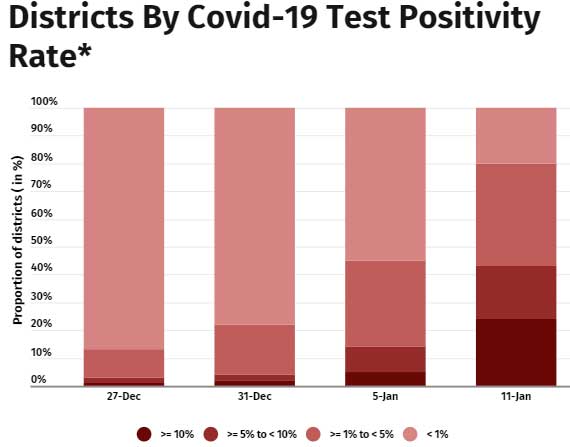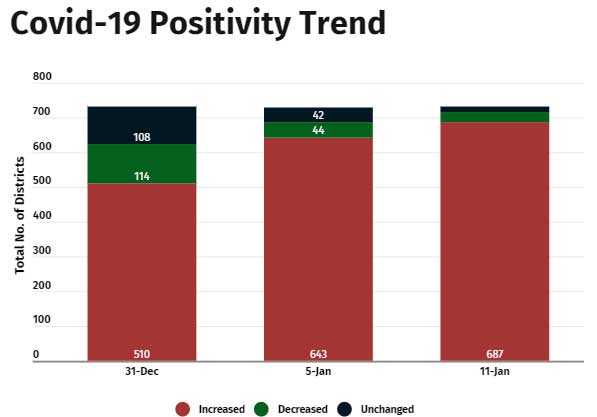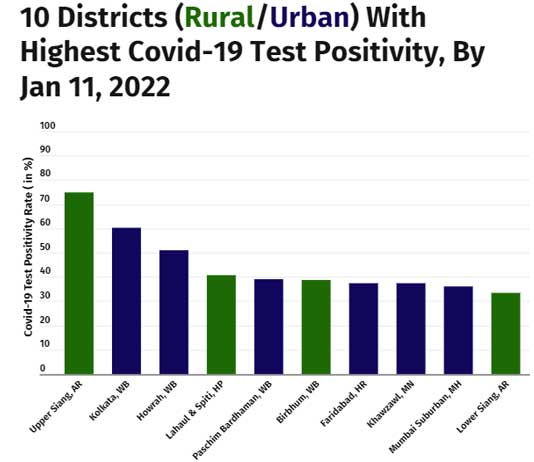Headlines of The Day
India’s 3rd wave of Covid infections widespread in less than 3 weeks
India’s third wave of Covid-19 has become widespread in less than three weeks since cases began rising on December 27, 2021.
On December 27, 19 of 733 districts–less than 3%–had Covid-19 test positivity ratio (TPR) greater than 5%, meaning that one in every 20 Covid-19 tests were positive. By January 11, 2022, 311 of 734 districts–42%, and an increase of 15 times–reported Covid-19 TPR greater than 5%.
Just five districts had Covid-19 TPR greater than 10% on December 27; by January 11, that number had increased 34 times to 174 districts.
On December 27, only two states, Arunachal Pradesh and Mizoram, had districts with greater than 10% Covid-19 positivity. By January 11, 30 of India’s 36 states and union territories had districts with greater than 10% Covid-19 positivity.
If a district consistently has a TPR greater than 5% or a TPR that is increasing, it is likely that the virus is spreading and the district is not testing enough people, we had reported in September 2020. The World Health Organization says the pandemic is under control if the TPR is under 5% for a period of two weeks.

Covid-19 test positivity increasing in over 90% of districts
Covid-19 positivity increased in 510 (70%) of 732 districts reporting these data, between December 27 and December 31, 2021. Between January 5 and January 11, 2022, positivity had increased in 94% of districts.

Both urban and remote rural districts have high positivity
About 26% of India’s districts are urban and the rest are rural. Urban districts accounted for more than half (55%) of those with Covid-19 TPR greater than 10% by January 11, in line with Covid-19 spreading faster in densely populated urban areas compared to less populated rural areas, as IndiaSpend reported in November 2020.
Yet, far-flung rural districts had some of the highest positivity rates by Jan 11: Upper Siang in Arunachal Pradesh reported 75% Covid-19 TPR, the highest in India, ahead of even heavily urban Kolkata (60%) and Howrah (51%). Lahaul and Spiti, the remotest district of Himachal Pradesh, with most road access to the rest of India cut off by winter snow on the high Himalayan passes, has the fourth-highest TPR in the country, at 41%.

Niti Aayog health member V.K. Paul said on January 12 that the intensity of the pandemic during India’s third wave was being “driven and powered” by the Omicron variant of Covid-19, which is rapidly replacing the previously dominant Delta variant. Business Standard











